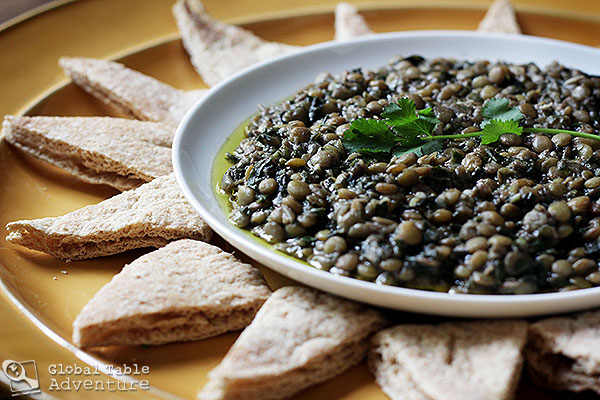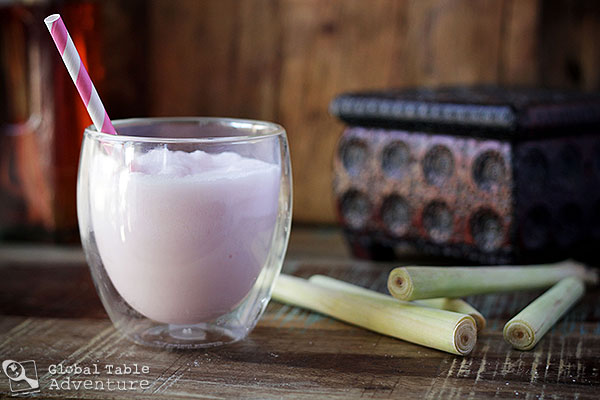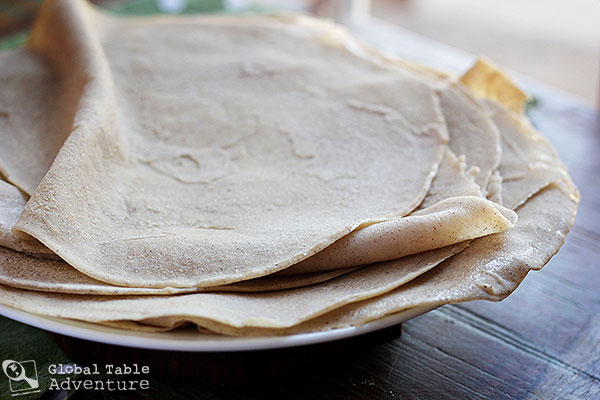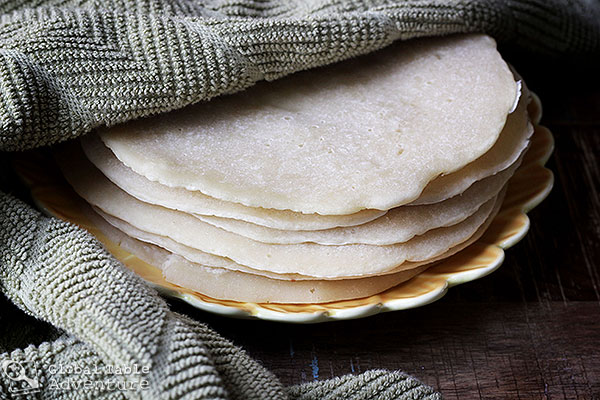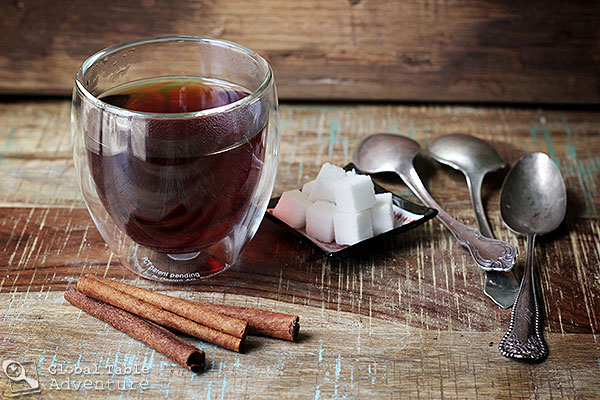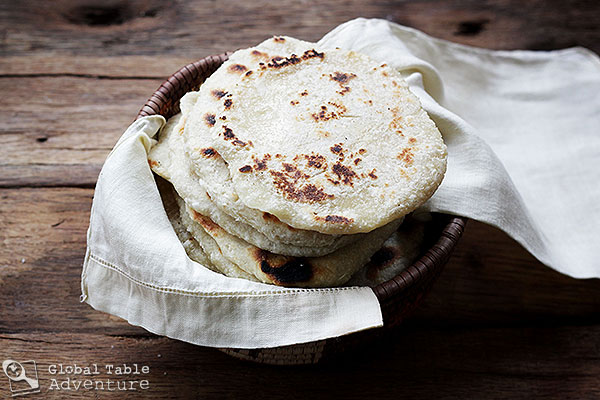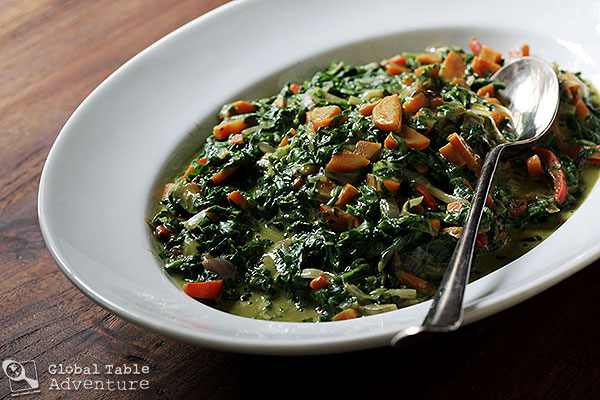
When my neighbor Jonathan told me he craves Kisamvu for weeks after his visits to Tanzania, I knew I had to try it. Kisamvu is just another word for cassava leaves, but Jonathan tells me he uses spinach whenever he’s in the states and the taste is a very good approximation. Jonathan gave me the very recipe they use at the orphanage he visited in Tanzania, called the Janada Batchelor Foundation for Children. While there, he films documentary footage to help promote the good work they JBFC does with his production company called RTC Pictures… What a fun gig! Now about that recipe… There are no exact measurements, although I did have the pleasure of watching the “Mamas” make a huge batch of kisamvu in his video footage (Mamas are the ladies in charge of the children). They do everything from build and stoke the kitchen fires (which are built under three large stones. The stones hold the pot). They also chop wood and cook the food. And the food comes straight from their gardens, moments …
Read More
There’s a whole head of garlic up in these cyber pages. By now you should be able to smell it through the screen. I know. You have boys to kiss. Important business meetings and no Altoids. You don’t have time to smell like garlic. But indulge me for a moment, please. We’ve eaten a whole head of garlic on this Adventure before, as with our Lebanese garlic sauce Toum, but this time our garlic is making friends with lentils and Swiss chard. They bubble and steam up together, considerably mellowing out the flavor. To round out the flavor, there’s a squeeze of fresh lemon juice, a splash of pomegranate syrup, and a pile of cilantro. (To my cilantro haters: don’t worry, the offending leaves get waaay cooked down. If you can eat Salsa, you can eat these lentils). The result is a lovely warm lentil side dish or dip (best enjoyed with homemade pita bread). I even like it cold, with salad. And it’s definitely better the next day, although you might want to “refresh …
Read More

Swaziland’s swooping slopes are dotted with crops; it is here that the Swazi grow the freshest produce, from sunshine yellow lemons, to buttery avocados. With farming of that caliber, it should come as no surprise that Swazi Salads are especially grand. This is not to say they are carefully composed salads. (Most things that are careful, aren’t nearly as delicious.) No, these are simple, heaped piles of chopped veggies. But you can get them on the side of even the most humble plate of beans, which counts for, well, everything. There’s no elaborate dressing, save, perhaps, a squeeze of lemon juice and fresh grated ginger. Croutons? Forget it. The crunch you seek comes from a handful of crushed peanuts and the crisp bite of a sharp radish. Feeling bold? Add minced hot peppers to that lemon juice. Fresher and brighter is the name of the game. So what’s in a Swazi Salad? Every time I looked up Swazi salads, I happened across some combination of avocado, lettuce, onion, and beets. Beets were everywhere: red heaped piles …
Read More
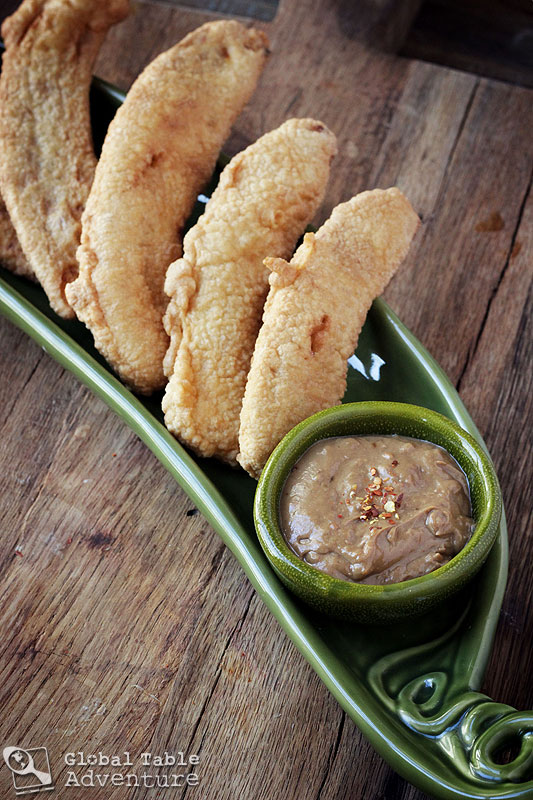
Bakabana is a traditional treat in Suriname. All you do is take very ripe plantains (i.e. blackened), deep fry them, and dust the crispy, fried goodness with powdered sugar. Alternatively, you can serve them with homemade peanut sauce. The result is a crispy-on-the-outside, soft-on-the-inside, finger-licking snack. What could go wrong? (Actually, a lot. I made this recipe three times, before I finally figured out that I needed cornstarch to make the batter crispy. For reference see below. The piece on the left is an all flour batter, the lighter piece on the right is half flour, half cornstarch – and much crispier… …I also made a really bad peanut sauce…so bad I had to toss the recipe. Thankfully, I have an amazing peanut sauce recipe… my old standby, from when we cooked Indonesia. If you decide to make this peanut sauce, it will look like the picture below, not like the one pictured with the plantains.) Thanks to our readers on Facebook, Megan H. and Natalie F., who suggested we try Bakabana. This was a fun one. …
Read More
Lemongrass. Coconut milk. Slushie. Pink. Pink. Pink. Hello. The weather’s been heating up lately, so when I happened up this Dawet recipe so beloved in Suriname, I knew we had to try it. When I discovered it was also enjoyed in slushie form? I did a little dance. Slushies are always a good idea. The refreshing, tropical drink is made with an easy, homemade lemongrass syrup, a swirl of coconut milk, and a splash of water (or ice, if making a slushie). Dawet originates from Asia, and is especially popular in Indonesia. The drink was brought to Suriname and popularized as a result of colonization and immigration. In my research, I found several photos of the dawet in Suriname, and it seems the slushie is popular among street vendors. Ava and her friend were fans. There’s so many ways to make this drink. I suggest making the syrup and then toying with how much coconut milk you’d like, versus how much ice. The quantities given are what worked for me, but there really are no …
Read More
The South Sudanese love a good, chopped tomato salad on the side of their meals. Often, it’s no more than tomato, onion, and hot, green chili peppers… perhaps a spot of parsley… But other times, a bit of peanut butter and lime juice makes for a grand dressing… and tastes just like home, if you happen to be from South Sudan. When I was deciding which of the two recipes to try, the choice was clear: if peanut butter is involved, the answer is yes. Most definitely, yes. You can make this vegan recipe as spicy as you’d like by adding more (or less) chili peppers. I thought two Thai birds made a nice, mild/medium heat (bordering on hot if someone bit directly into a piece of pepper). For little ones, you can always leave the chili peppers out. In the end, the lime juice makes the salad tangy and bright, while the peanuts give it that African flair. I call a recipe like this, all kinds of wonderful. And so does Ava. Inspired by this …
Read More
I never thought I’d need a cow’s brain and a credit card for this lil’ ol’ Global Table Adventure of ours. The thing is, if I were to make Kisra in the most authentic way – the South Sudanese way – that’s exactly what I’d need. Locals would use the cow’s brain, which is naturally quite fatty, to grease the pan. I got the tip on good authority; from this amazing South Sudanese food post on Green Shakes in Sudan. There you’ll find photos of local women rubbing brain renderings on their flat griddle-like pan. According to The World Cookbook for Students, unroasted sesame oil works fine as well… and gives the wholesome crepe a clean sort of flavor and makes them entirely vegan. I know what I chose…. what would you choose? Now, let’s talk credit cards. I read several passages that indicate locals spread out the kisra batter with credit cards. I had a small plastic scraper that worked just fine… but the credit card would definitely add a touch of excitement (will it or …
Read More
Gorraasa is a soft, doughy bread enjoyed in the Sudan that tastes like a really thick tortilla. The texture is a bit more spongy, however, and when I pulled mine into pieces, I was delighted to find the slight elasticity at once addicting and good for picking up food. Which is exactly how the Sudanese use Gorraasa. They place a round of Gorraasa under stewed meats or other entrees, then tear off bits of the bread to pick up the food instead of using utensils. It can also be enjoyed on its own… as Ava demonstrates here: I first learned about Gorraasa from Mark Tanner who spent quite a bit of time traveling through Sudan, though I found his recipe needed adjusting to work in my kitchen. Namely, more baking powder was needed to obtain the open holes (and if the batter happened to be too wet, the holes would pop before they set). Also, I found that, though he suggested flipping the Gorraasa while cooking, when I did so, the results no longer matched the photo …
Read More
Under the pulsing noonday sun, Tea Ladies line the streets of Sudan. They soak up what little shade they can find. Water simmers over charcoal stoves. They swirl a mishmash of ingredients through the steam, into the pot. You can pick your combination. Will it be mint? Or what about ginger? The most popular option for many patrons is cinnamon tea, a blend of black tea steeped with cinnamon sticks. Many patrons like to hold a sugar cube between the teeth while drinking to sweeten the brew. When business is good, men sit and talk at the edge of their Tea Lady’s makeshift stall. They sip her healing brews on metal chairs, a wooden box, or on their haunches. They don’t rush. They soak in the warmth. The might nibble some Zalabya, a.k.a. sugar dumplings, to go with it. Others rush by and drink on the run. When their too busy at home to make tea, this is their version of Starbucks or perhaps Dunkin Donuts. Makes 3 cups Ingredients: 3 cinnamon sticks 3 cups …
Read More
After you make this recipe, you will be haunted. Your home will blossom with the tropical scents of Sri Lanka. And your mouth will beg to remember each bite: the slightly toasted note from the curry leaves, the vanilla-like pandan, and the ultra creamy coconut milk. Not to forget the cinnamon, because.. well, how could we? This sweet, sweet earthiness pulls the rice together. Yes. When it comes to this rice, it’s all good. Now, there’s nothing simpler than this rice. This is an “Add everything to the pot and cook” sort of recipe… and once you make it, I’m certain it will make it’s way into the regular rotation. It’s simply too easy and too flavorful. To make your life easier, just follow these simple guidelines: 1. Run, don’t walk, to your nearest Asian market. 2. Pick up an armful of pandan and curry leaves and tuck them safely into your freezer door. 3. Toss them in a pot and enjoy the happily ever after that is Sri Lanka’s Yellow Rice, or Kaha Bath. 4. …
Read More
The best thing about thinking I don’t like something, is finding out how wrong I am. I’ve always operated under the assumption that flaked coconut is much too squeaky between my teeth. Sri Lanka and these Coconut Roti proved me wrong. There’s something so refreshing about dumping three ingredients in a bowl and emerging with warm, doughy flatbread that smells like a day in the tropics. Or Sri Lanka, to be specific. In fact, I did an entire post cataloging the best recipes with three ingredients or less from around the world. I learned how to make these by watching my friend shake flour and coconut shreds into a bowl. There wasn’t a measuring cup in sight. She added the water by feel, too. When I asked her the ratio of coconut to flour, she shrugged and said “a little coconut. more flour.” So, as you make these, remember her advice. There really is no wrong way to make coconut roti. As long as you eat them warm… Makes 8-10 small, or 4-6 large Ingredients: 2 cups flour …
Read More
My friend Ruby grew up in Sri Lanka and spent the better part of her 40th birthday making sure I learned everything there is to know about the food. Here she is drinking Ceylon Tea, grown in … you guessed it… Sri Lanka! Ruby isn’t keen on cooking (or so she claims), so she supervised while her dear friend Iona showed me the ropes. Iona blew me away by whipping up not one, not two, but three curries. I fell in love each steaming, fragrant batch. There was everything from beef to chicken. But I left most excited about making this White Dal. Why? Because what tastes amazing and what I actually have time to make … well, they rarely come together. White Dal is something that can be thrown together very easily with a minimum of ingredients, which fits perfectly into my mom schedule. It also happens to be vegan, which is an added bonus.. The flavor is outstanding thanks to three simple ingredients: pandan, curry leaves, and a cinnamon stick. These first two can be …
Read More


